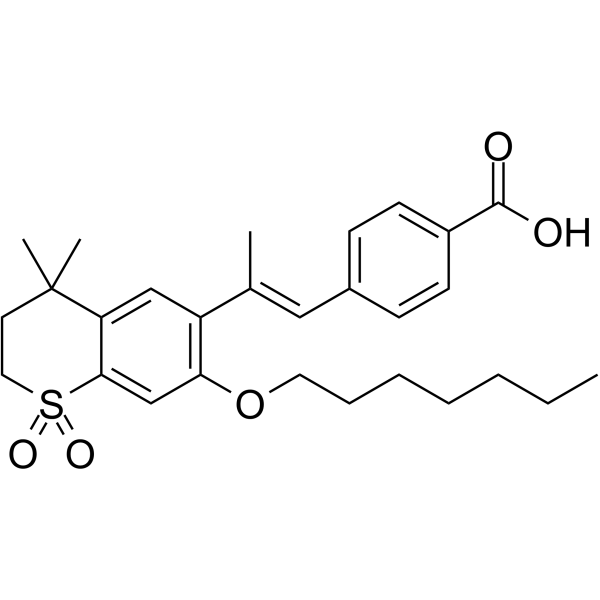Retinoic acid signaling is necessary for the development of the organ of Corti.
Y Raz, M W Kelley
Index: Dev. Biol. 213(1) , 180-93, (1999)
Full Text: HTML
Abstract
The cellular mosaic of the mammalian organ of Corti represents one of the most highly ordered structures in any vertebrate system. A single row of inner hair cells and three or four rows of outer hair cells extend along the basal-to-apical axis of the cochlea. The factors that play a role in the development of specific cell types within the cochlea are largely unknown; however, the results of previous studies have strongly suggested that retinoic acid plays a role in the development of cells as hair cells. To determine whether cochlear progenitor cells can respond directly to retinoic acid, the expression patterns for each of the RAR and RXR receptors within the embryonic cochlear duct were determined by in situ hybridization. Results indicate that RARalpha, RXRalpha, and RXRgamma are initially expressed throughout the cochlear duct. As development continues, the expression of each receptor becomes more intense in cells that will develop as hair cells. At the same time, receptor expression is down-regulated in cells that will develop as nonsensory cell types. To determine the effects of retinoic acid signaling during the development of the organ of Corti, activation of retinoid receptors was blocked in cultures of the embryonic cochlea through receptor-specific antagonism or inhibition of retinoic acid synthesis. Results indicate that inhibition of retinoic acid signaling induces a significant decrease in the number of cells that develop as hair cells and a disruption in the development of the organ of Corti. These results demonstrate that cells within the developing cochlea can respond to retinoic acid and that signaling by retinoic acid is necessary for the normal development of the organ of Corti.Copyright 1999 Academic Press.
Related Compounds
| Structure | Name/CAS No. | Molecular Formula | Articles |
|---|---|---|---|
 |
Ro 41-5253
CAS:144092-31-9 |
C28H36O5S |
|
Effect of all-trans-retinoic acid on enterovirus 71 infectio...
2014-05-01 [Br. J. Nutr. 111(9) , 1586-93, (2014)] |
|
Retinoic acid inhibits in vivo interleukin-2 gene expression...
2009-04-01 [Immunology 126(4) , 514-22, (2009)] |
|
Overexpression of mucin genes induced by interleukin-1 beta,...
2002-06-01 [Exp. Lung Res. 28(4) , 315-32, (2002)] |
|
Retinoids and human breast cancer: in vivo effects of an ant...
2005-02-28 [Cancer Lett. 219(1) , 27-31, (2005)] |
|
A putative G-protein-coupled receptor, H218, is down-regulat...
1998-03-15 [Exp. Cell Res. 239(2) , 320-5, (1998)] |